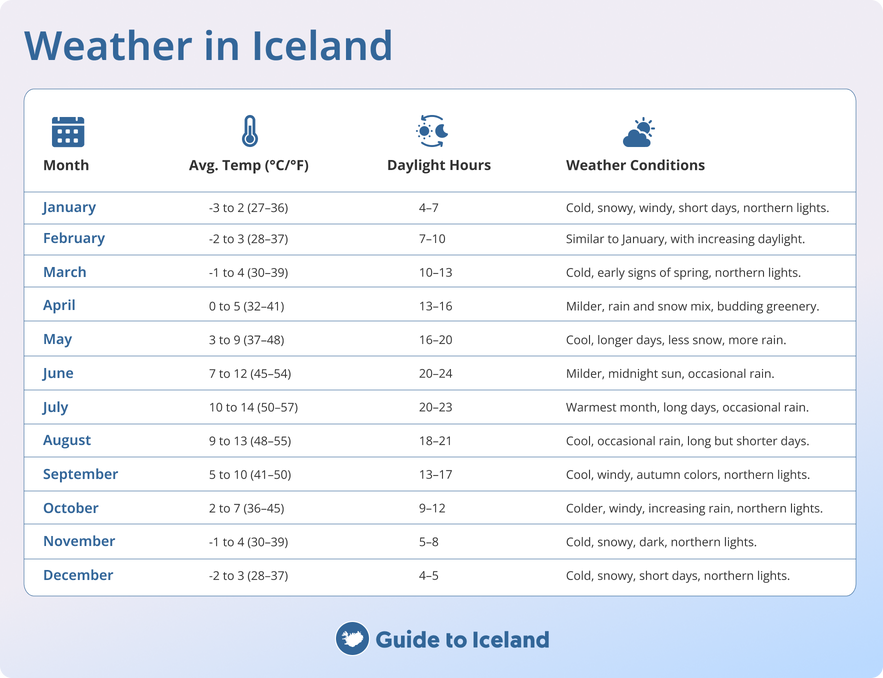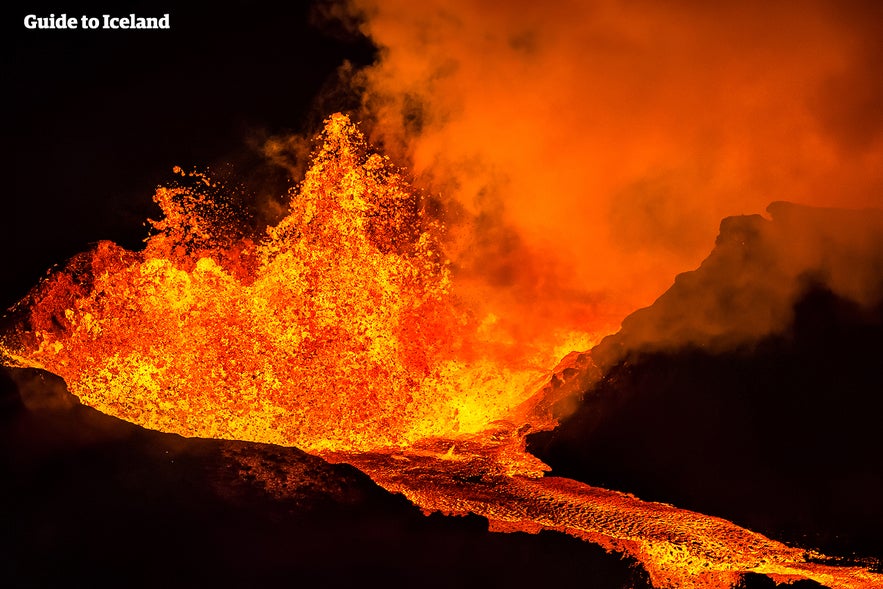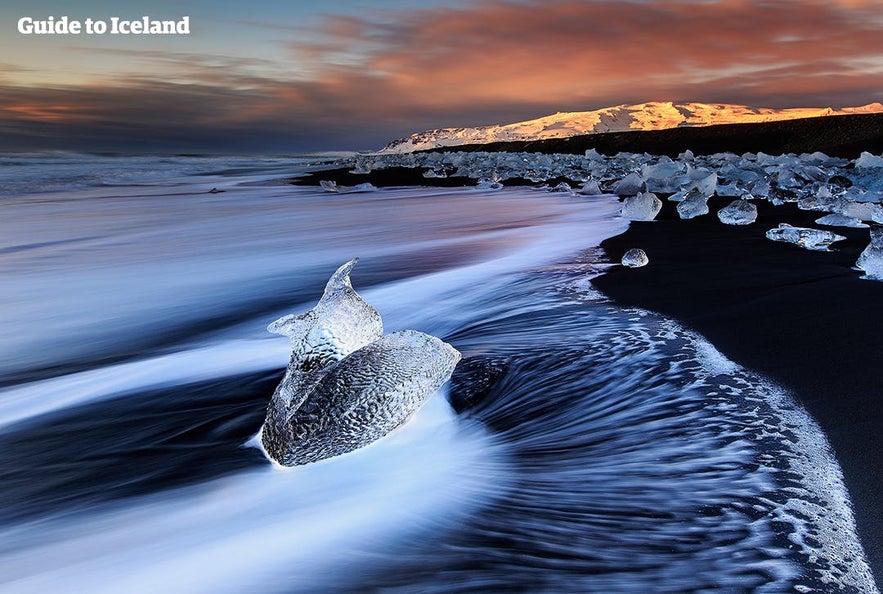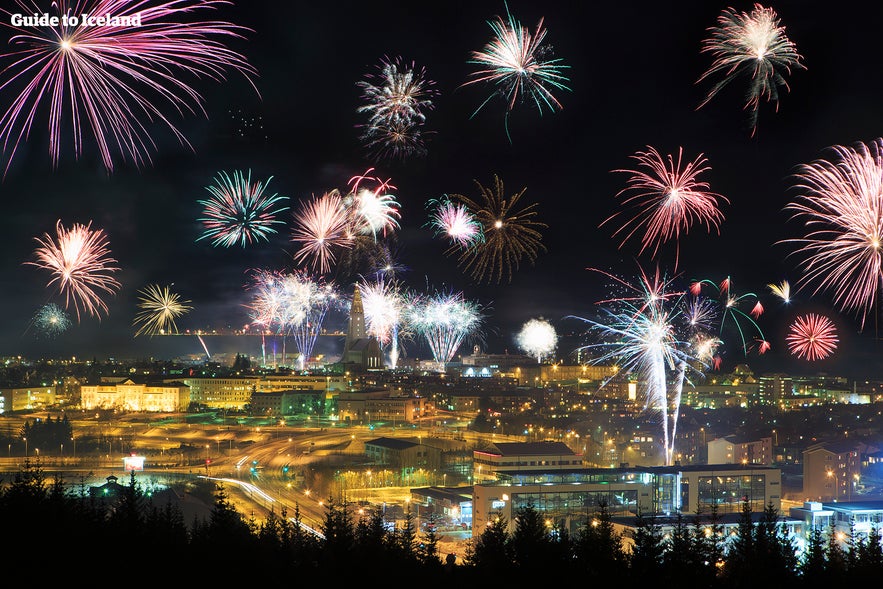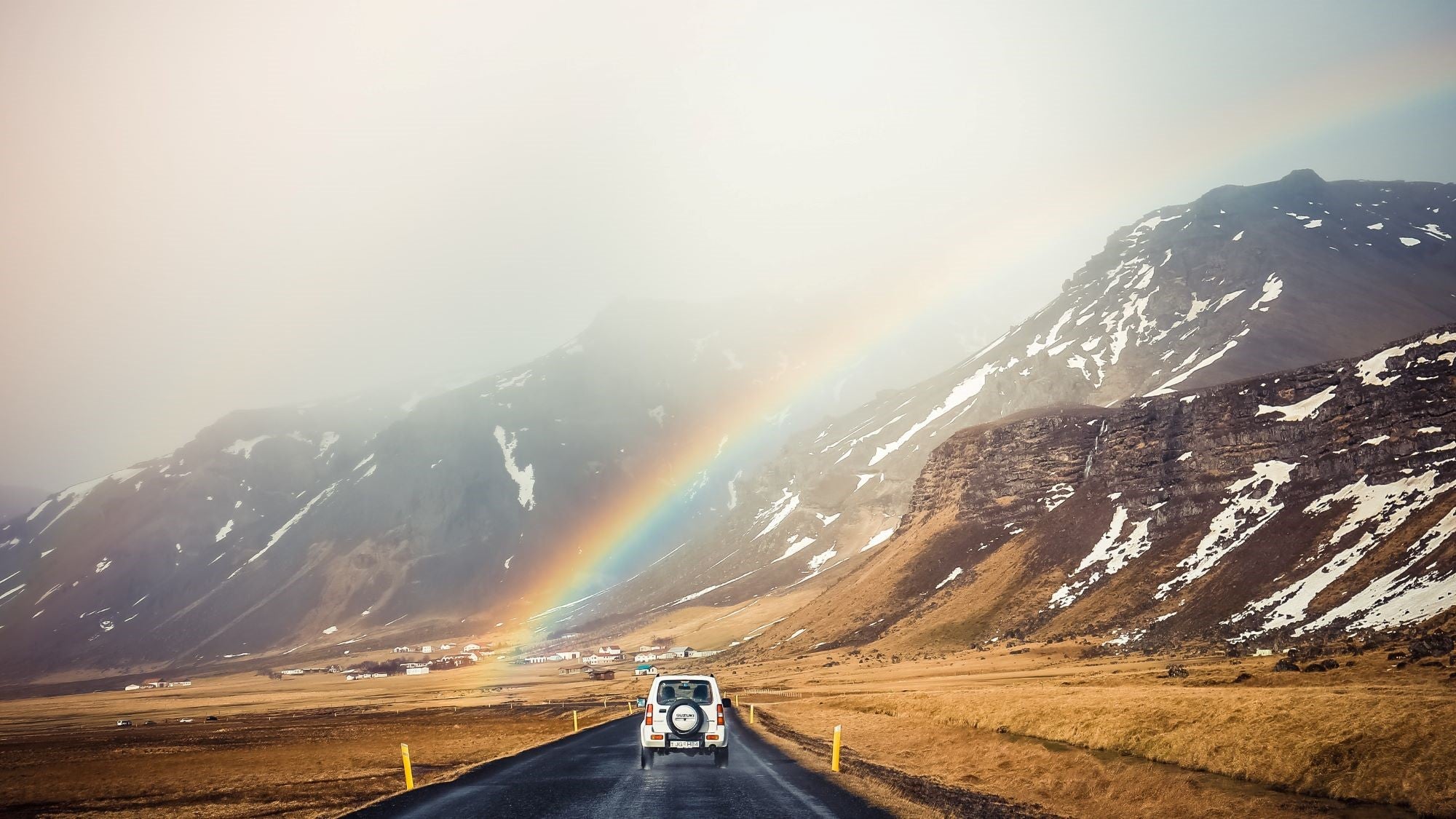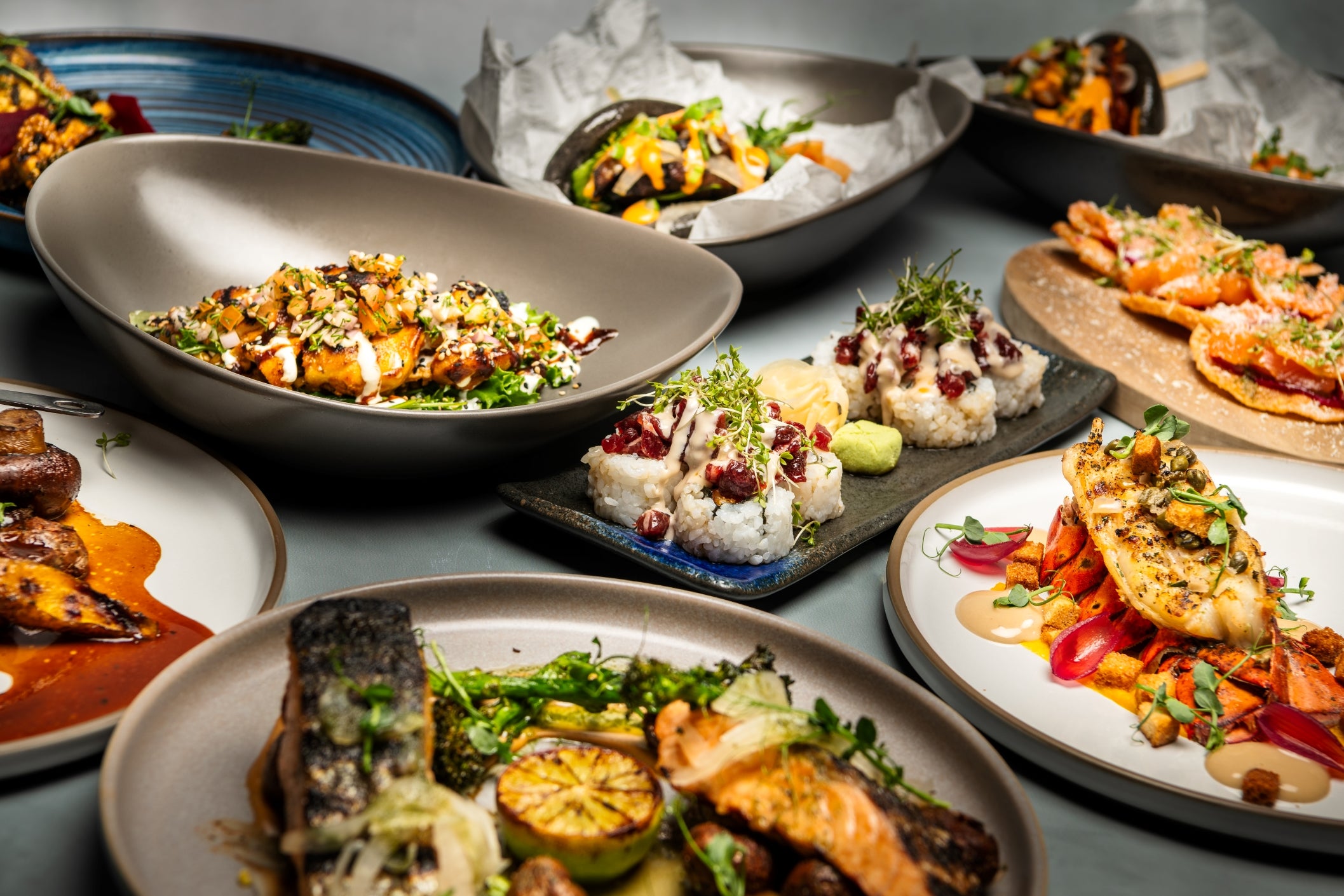
Plan your next great escape and discover why Iceland is worth visiting beyond the myths that surround it. Many travelers picture the country as an expensive, icy wilderness, but the reality is far more diverse. This guide challenges the most common misconceptions about Iceland, revealing what travel here is truly like.
Contrary to its reputation as an extreme destination, Iceland offers adventure holidays that balance thrill with accessibility. You can hike on glaciers, explore lava caves, or unwind in hot springs, all supported by safe roads and excellent visitor facilities. The country’s wild reputation often hides how easy and rewarding it is to explore.
Nature tours led by locals reveal that Iceland’s landscapes are not as remote as they seem. Self-drive tours with convenient rental cars show that independence on the road is simple to achieve. For travelers who prefer structure, Ring Road tours prove that seeing Iceland’s attractions is within reach.
Keep reading to uncover the truth behind 35 common myths about Iceland and see what truly makes this island unlike anywhere else on Earth.
Why You Can Trust Our Content
Guide to Iceland is the most trusted travel platform in Iceland, helping millions of visitors each year. All our content is written and reviewed by local experts who are deeply familiar with Iceland. You can count on us for accurate, up-to-date, and trustworthy travel advice.
Key Takeaways
-
Iceland’s reputation for harsh weather, high costs, and isolation doesn’t reflect reality. The country is accessible, safe, and full of natural variety in every season.
-
Its landscapes, which include glaciers, volcanoes, waterfalls, and black sand beaches, are easy to reach and rewarding to explore.
-
Reykjavik offers creativity, modern design, art, and nightlife that surprise most visitors.
-
Local food is fresh and sustainable, and budget options make dining more affordable than many expect.
-
Iceland’s wildlife, hot springs, and hiking trails give travelers countless ways to experience nature responsibly.
-
While travel costs and unpredictable weather can be challenging, the country’s beauty and safety make it worth the trip.
Myth 1: Iceland’s Weather Is Too Harsh To Be Worth Visiting
Many travelers picture Iceland as a frozen island with icy winds and constant snow. The name alone suggests a place too cold to explore, and stories of sudden temperature drops give the impression that the weather is always severe.
In reality, Iceland’s weather and temperature are milder than most expect. Winters in Reykjavik are often warmer than in New York or Berlin. Conditions change quickly but are rarely extreme, and knowing the right things to wear in Iceland is usually enough to stay comfortable outdoors.
Cool air makes hot springs such as the Blue Lagoon, Sky Lagoon, and Earth Lagoon Myvatn feel even more soothing. Winter turns Gullfoss Waterfall and the ice caves of Vatnajokull National Park into unforgettable sights. Iceland’s shifting climate gives every visit its own beauty.
Myth 2: It's Always Windy in Iceland
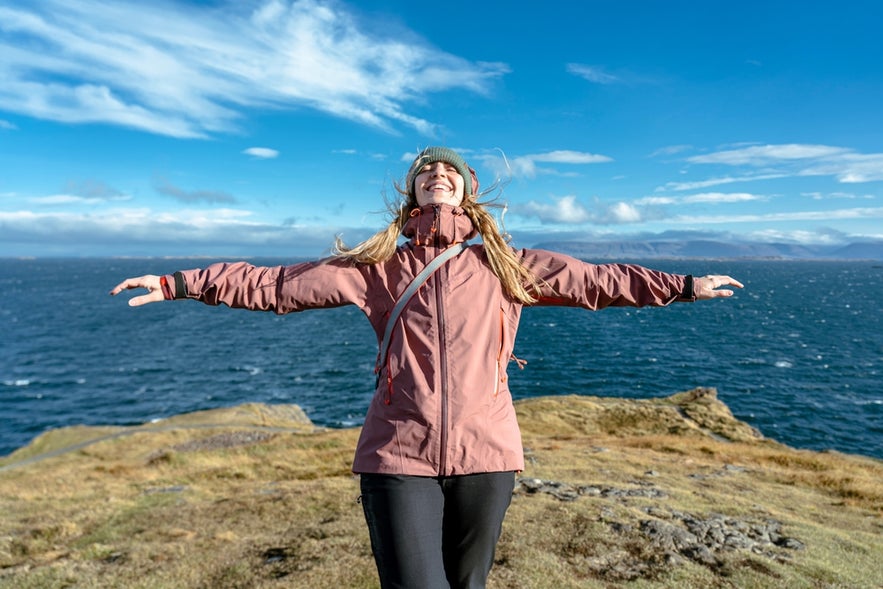
Iceland is known for its strong winds, and many travelers think it never stops blowing. Its open landscape and North Atlantic location allow gusts to move freely across the island, shaping the Iceland climate that many imagine to be extreme.
Windy days are common, but they rarely disrupt travel. The Icelandic Road and Coastal Administration shares driving condition updates, so travelers can plan safely and explore without worry. These measures keep Iceland travel safety high even in exposed areas.
The wind is part of the experience that defines Iceland’s landscape. You feel it while standing on the black sands of Reynisfjara Beach, watching waves crash below Dyrholaey Cliff, or walking along the sea cliffs near Arnarstapi Village.
Myth 3: You Can Get Killed by a Volcano in Iceland
Iceland has over thirty active volcano systems, so it is understandable for travelers to ask if Iceland is safe to visit. The island lies on a volcanic hotspot where eruptions occur, but these events seldom pose danger to tourists.
Strict monitoring and early-warning systems keep residents and visitors safe. Most Iceland volcanoes are far from populated areas, and when eruptions happen, access is quickly restricted.
This careful management allows visitors to see Iceland’s volcanic landscapes without risk. You can hike across cooled lava fields on the Reykjanes Peninsula or join the Inside the Volcano tour into the dormant Thrihnukagigur Crater. These experiences show that Iceland’s volcanoes can be one of the country’s most powerful attractions.
Myth 4: You Hardly See the Sun in Iceland
Some travelers imagine Iceland as a country with limited sunlight, but summer tells a different story. During the peak of Iceland daylight hours, the sun barely sets, and the sky glows with soft light that lasts through the night. This phenomenon, known as the midnight sun, shows visitors exactly what Iceland is like in its brightest season.
The long days create endless opportunities for adventure. You can go on a self-drive tour of the Snaefellsnes Peninsula, see golden light on Kirkjufell Mountain on a kayak at night, or hike to Mount Snaefell under a glowing sky.
These extended hours of sunlight make summer in Iceland one of the best times to explore. It’s a season of energy and discovery that contrasts completely with winter in Iceland.
Myth 5: Icelandic Winters Are Nothing but Darkness
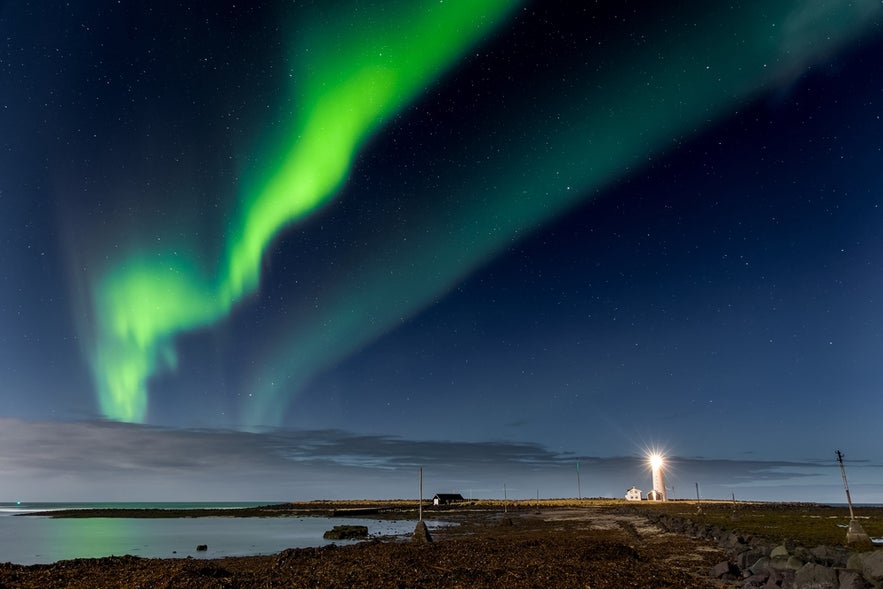
Iceland winter days are short, but the country is far from dark. Even in December and January, the sun rises for several hours. Many travelers come specifically for these peaceful hours of low sunlight, perfect for sightseeing and photography tours.
The long nights bring out one of Iceland’s most famous sights. Visiting Iceland in winter offers the best chance to see the northern lights, especially in Thingvellir National Park, Grotta Nature Reserve, the Reykjanes Peninsula, and the Myvatn Area. When skies are clear, the auroras create bright waves of color that transform the horizon.
For anyone wondering if Iceland is good to visit in winter, the answer is yes. You can also explore the best icy waterfalls like Gullfoss and Skogafoss, relax in warm geothermal pools, and join a guided tour into a natural ice cave inside Vatnajokull National Park.
Myth 6: Iceland’s Beaches Are Black, Cold, and Uninviting
Many travelers expect Iceland's black sand beaches to be bleak, but they are among the country’s most distinctive natural sights. Formed by volcanic activity, the dark sand and rugged cliffs give these coasts a dramatic beauty found nowhere else.
The most famous example is Reynisfjara Beach near Vik Village, where basalt columns rise above the Atlantic and sea stacks stand just offshore. Travelers also visit Diamond Beach, where ice fragments from nearby glaciers sparkle across the sand like gemstones.
These remarkable beaches in Iceland reveal how diverse the landscape can be. They may not invite sunbathing, but they capture the raw scenery that makes Iceland a nice place to visit for travelers seeking something extraordinary.
Myth 7: The Food in Iceland Is Bad and Overpriced
Many visitors expect Icelandic food to be strange or unpleasant because of stories about fermented shark and pickled fish. These dishes are part of the country’s history, but they represent only a small part of what people eat today.
Modern Icelandic restaurants focus on fresh, high-quality ingredients. In Reykjavik, places like Kol Restaurant, The Fish Market, and Fjallkonan Restaurant show how simple ingredients can be refined, comforting, and celebrate Iceland's local cuisine.
Travelers often ask if Iceland is expensive, and food prices are indeed higher than in many other countries because local production is limited and many supplies come from abroad. Even so, you can find affordable restaurants, local bakeries, and food halls in Reykjavik.
Myth 8: Iceland’s Nature Is Dull and Gray
Some visitors imagine Iceland as a country of gray rocks and ash, but its landscapes are full of color and life. The contrast of black lava fields, green moss, blue ice, and golden grasslands shows how diverse Icelandic nature really is.
You can hike through green moss fields at Eldhraun Lava Field, watch orange geothermal steam at Hverir Geothermal Area, or kayak along blue icebergs across Jokulsarlon Glacier Lagoon. In summer, wildflowers fill the valleys around Thingvellir National Park, and in autumn, the mountains near Landmannalaugar showcase red, yellow, and orange slopes.
Iceland's landscapes are shaped by fire and ice, giving travelers colorful places to explore in every season. Few destinations match the richness and variety of scenery, proving that Iceland is beautiful in ways that go far beyond what most expect.
Myth 9: Reykjavik Is Boring and Not Worth Visiting
Others think Reykjavik is only a quick stop before exploring Iceland’s countryside, but the capital has a lively mix of attractions and local charm. There are many things to do in Reykjavik, including visiting museums and galleries, browsing local shops, and enjoying live music.
Reykjavik culture blends tradition and creativity. You can visit Hallgrimskirkja Church for panoramic views, explore the Reykjavik Art Museum, or wander the streets filled with murals. The capital’s best cafes, bookshops, and design stores give the city a relaxed and welcoming atmosphere.
As night falls, Reykjavik nightlife comes alive along Laugavegur Street, where bars, music halls, and cozy pubs stay open late. Between its museums and food scene, Reykjavik is worth visiting not just as a gateway to Iceland’s nature but as a destination full of creativity and energy.
Myth 10: It's Too Cold in Iceland for Flowers or Greenery
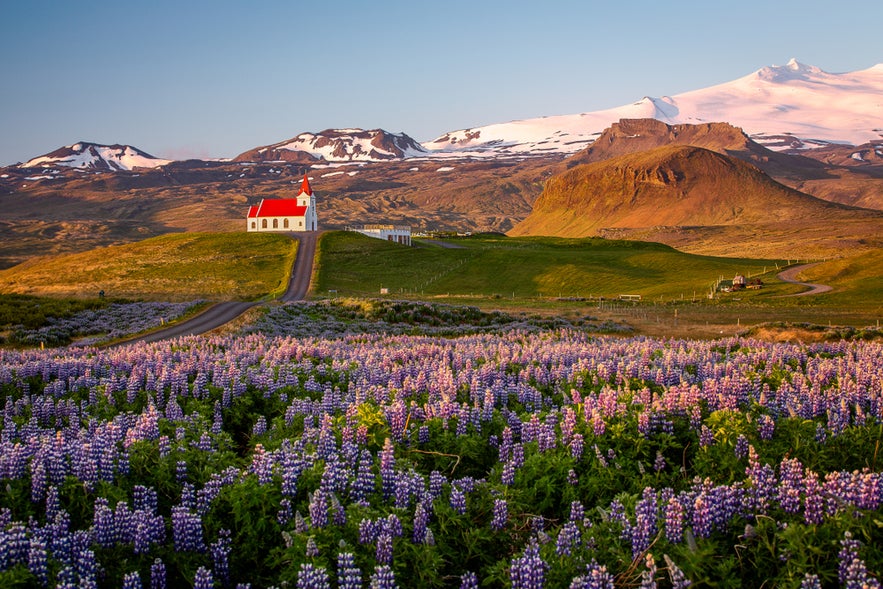 Despite its name, Iceland has a thriving ecosystem filled with hardy plants and wildflowers. The country’s flora includes more than 5,000 species of mosses, grasses, and flowering plants that adapt easily to cool temperatures and long daylight hours.
Despite its name, Iceland has a thriving ecosystem filled with hardy plants and wildflowers. The country’s flora includes more than 5,000 species of mosses, grasses, and flowering plants that adapt easily to cool temperatures and long daylight hours.
During summer, the landscape turns lush and colorful. Fields of purple lupines blanket the hills, and wildflowers bloom around lakes and along hiking trails. Travelers can explore the Reykjavik Botanical Garden or the Akureyri Botanical Garden, both showcasing Arctic and native species that thrive despite the cool climate.
You can also see the beauty of Iceland's nature at the moss-covered lava fields near Eldhraun, the meadows around Thingvellir National Park, and the green valleys of Skagafjordur Fjord. These vibrant landscapes prove that Iceland is nice to visit for more than glaciers and volcanoes.
Myth 11: Iceland’s Waterfalls Aren’t Worth Seeing
Because Iceland has hundreds of waterfalls, some visitors assume they all look alike or that once you’ve seen one, you’ve seen them all. Pictures online rarely capture their size or the feeling of standing beside them. In reality, each waterfall has its own setting and mood.
Along the South Coast, you can walk behind the curtain of Seljalandsfoss, discover Gljufrabui hidden in a narrow canyon, or watch rainbows form in the mist at Skogafoss on sunny days. In the north, Dettifoss is known as the most powerful in Europe. These sites are among the best waterfalls in Iceland, defining the country’s dramatic nature spots.
Winter transforms them into something entirely different. Ice builds up around the edges, and snow softens the surrounding cliffs, turning places like Gullfoss into frozen sculptures. Seeing these waterfalls under snow and low light shows a quieter, more striking side of the landscape and proves that Iceland is worth the trip in any season.
Myth 12: Nature in Iceland Is Not That Unique
Some travelers assume Iceland’s landscapes look familiar, with fjords like Norway’s, volcanoes like Hawaii’s, and glaciers like Alaska’s. Yet Iceland combines these elements in ways found nowhere else.
Iceland’s geology is among the most diverse in the world. Travelers can ride a buggy through steaming valleys in Hveradalir Geothermal Area, walk across Vatnajokull Glacier, or snorkel between continents at Silfra Fissure. Relaxing in natural hot springs surrounded by lava fields is another way to experience the country’s powerful contrasts.
This variety shapes some of the most unique landscapes in the world. Moss-covered lava near Eldhraun, blue ice caves in glaciers, and the colorful slopes of Landmannalaugar show exactly why Iceland is a good place to visit for anyone who loves dramatic natural scenery.
Myth 13: It’s Hard To Find Waterfalls in Iceland
It’s easy to think Iceland’s waterfalls are hidden deep in the countryside or difficult to reach without a guide. With so many scattered across the island, planning a route can seem challenging at first. Yet most are surprisingly easy to find because they sit right beside the main driving routes.
Seljalandsfoss, Skogafoss, and Gljufrabui are just off the Ring Road on the South Coast, while Hraunfossar and Barnafoss are short, scenic detours in West Iceland. In the north, Dettifoss, Selfoss, and Godafoss mark highlights of the Diamond Circle, one of the most beautiful routes for Iceland sightseeing.
Driving between these sites or joining day trips from Reykjavik or Akureyri makes visiting these Iceland attractions simple and rewarding. If planning still feels overwhelming, taking waterfall tours shows how accessible Iceland’s nature really is, even in the winter months.
Myth 14: Iceland Is Too Expensive for Tourists

Many travelers ask, “Is Iceland expensive?” and assume it is beyond reach for budget travelers. It’s true that an Iceland travel cost can feel high compared to other destinations, but that’s largely due to the country’s location and heavy reliance on imported goods. Even so, there are many ways to travel affordably in Iceland.
Most of Iceland’s greatest experiences are free. You can explore waterfalls, volcanoes, and beaches without paying an entrance fee, and driving the Ring Road gives you access to nearly all major attractions. Public pools are inexpensive, with places like Laugardalslaug Pool in Reykjavik.
For budget travel in Iceland, simple habits make a big difference. Travelers often stay in guesthouses or campsites, buy groceries from local chains like Kronan, and book activities in advance to lock in lower rates. Despite its reputation, Iceland is worth it for its open access to nature, where some of the most memorable sights cost nothing at all.
Myth 15: Iceland Is Just Water With Ice
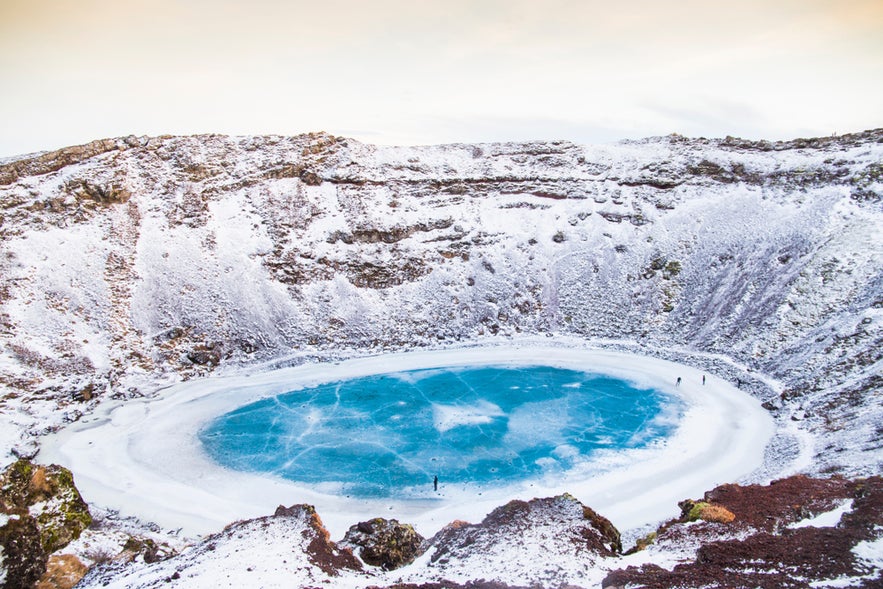 Some visitors imagine Iceland as a frozen island covered in snow and ice. The name suggests an endless winter, but the country’s landscape is filled with variety and warmth. Beyond its glaciers, Iceland is home to volcanoes, mountains, and lava fields.
Some visitors imagine Iceland as a frozen island covered in snow and ice. The name suggests an endless winter, but the country’s landscape is filled with variety and warmth. Beyond its glaciers, Iceland is home to volcanoes, mountains, and lava fields.
Travelers can hike through the steaming terrain of Hveradalir, visit the volcanic crater of Kerid, or explore the black sands and cliffs of the Snaefellsnes Peninsula. The contrast between geothermal heat and rugged earth defines Iceland’s dramatic scenery.
The icy side is just as unforgettable. Glaciers in Iceland cover about ten percent of the land, creating chances to hike, visit blue ice caves, or ride a boat across Jokulsarlon Glacier Lagoon. These frozen landscapes show why Iceland is worth visiting for its extraordinary natural beauty.
Myth 16: You Can Get Burned By Scalding Water in Iceland
The idea of boiling water bubbling from the ground can sound dangerous, and some visitors worry about stepping into the wrong pool. Iceland’s geothermal energy is powerful, but it’s also well-managed and part of everyday life.
Designated geothermal pools in Iceland are carefully maintained and safe for bathing. Popular spots such as the Blue Lagoon, Sky Lagoon, and Hvammsvik Hot Springs follow strict temperature and health standards to ensure safety and comfort for all guests.
In natural geothermal areas like Hverir and Geysir, signs and boardwalks clearly mark where the ground and water are too hot. Following these boundaries and knowing what not to do in Iceland is enough to ensure your safety, so you can enjoy the attractions without concern.
Myth 17: Iceland Smells Bad Because of Sulfur
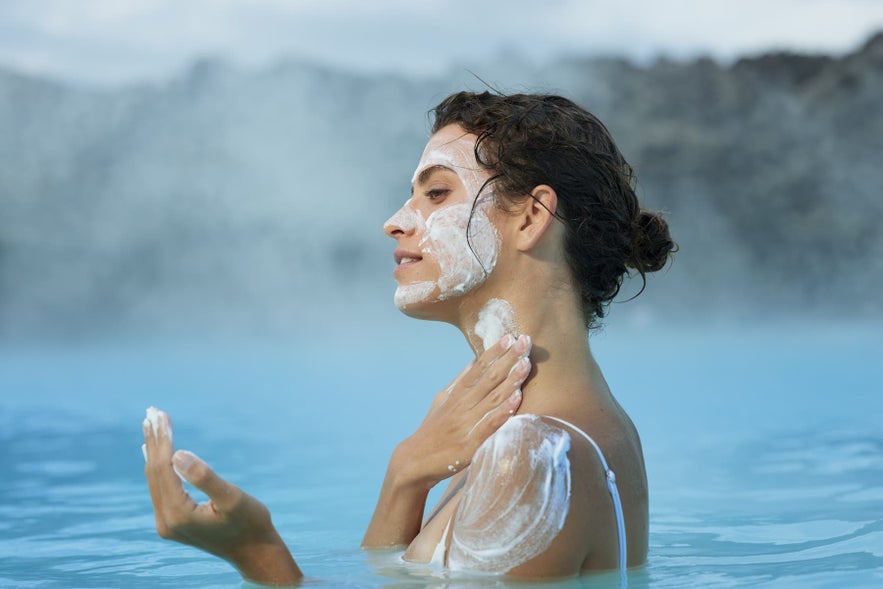
Some visitors are surprised by the faint sulfur smell near Iceland's geothermal fields and hot springs. The scent comes from the island’s geothermal energy, which powers homes, heats water, and fills natural pools across the country.
In geothermal sites like Hverir, Geysir, and the Blue Lagoon, the smell comes from sulfur minerals that color the earth and enrich the water. These minerals are known to soften skin, clear pores, and calm irritation, which is why many Icelandic skincare brands use geothermal ingredients in their products.
Sulfur-rich water is also valued for recovery and relaxation. Bathing in Iceland's geothermal spas after a hike or long drive helps ease tension and restore energy. The mild scent quickly fades once you settle into the warm water, and it’s well worth it for the comfort and health benefits that come with it.
Myth 18: Iceland Is Only for Hikers and Outdoor Enthusiasts
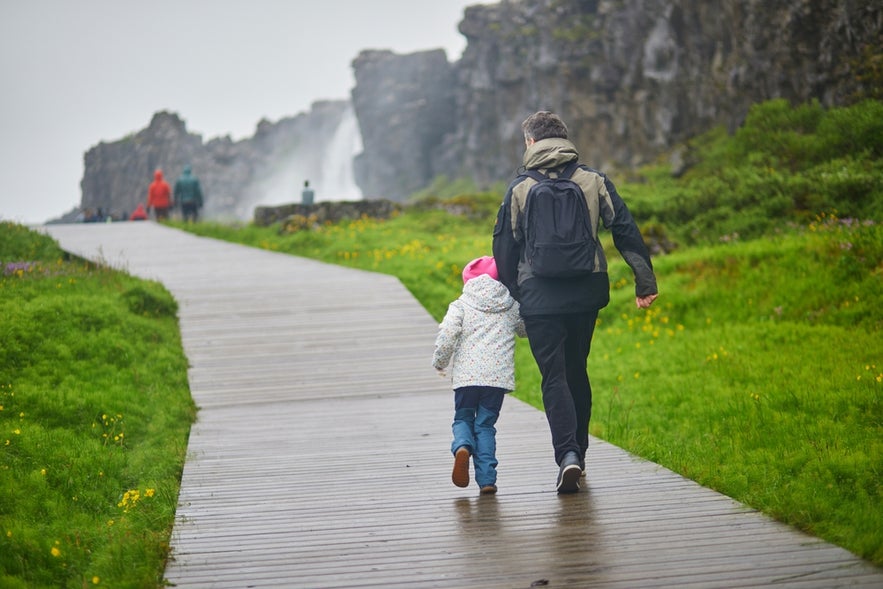
It’s true that there are incredible hiking trails in Iceland, but the country offers far more than long treks through the wilderness. It’s a destination that welcomes every kind of traveler, including families, beginners, and those seeking relaxation.
Many Iceland guided tours make exploring simple. Golden Circle tours make easy stops at Gullfoss Waterfall, Strokkur Geyser, and Thingvellir National Park, all accessible without strenuous walking. For those new to outdoor travel, bus tours handle the details while you enjoy the scenery.
If you want adventure without intense effort, there are plenty of easy activities in Iceland. You can snorkel in the Silfra Fissure, ride Icelandic horses near Reykjavik, or relax in geothermal pools. These options prove that Iceland is good for families and anyone looking for activities beyond hiking.
Myth 19: Hiking in Iceland Comes With Too Many Rules
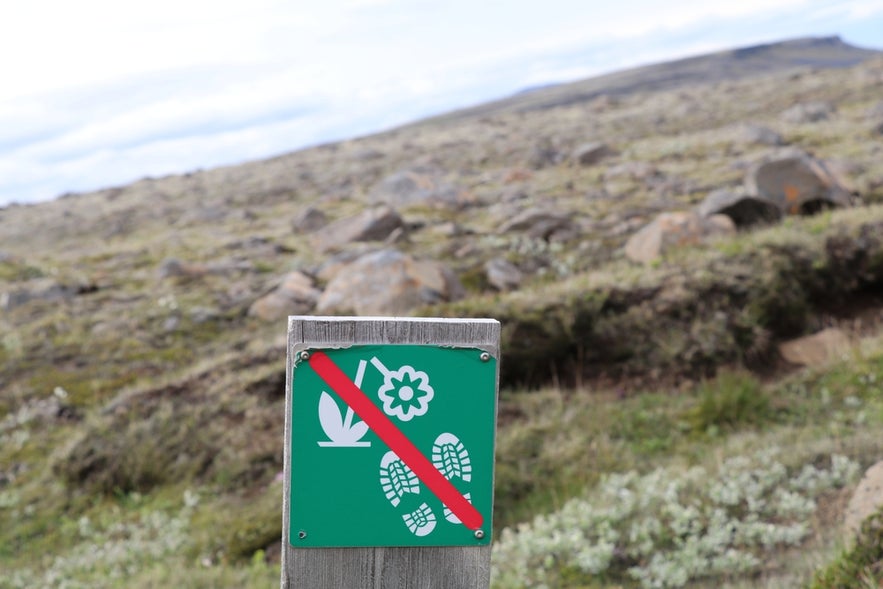 There are hikers who worry that Iceland’s hiking guidelines will make exploring less exciting. Rules about staying on marked paths or avoiding fragile moss may sound restrictive, but they protect the landscapes that make the island unforgettable.
There are hikers who worry that Iceland’s hiking guidelines will make exploring less exciting. Rules about staying on marked paths or avoiding fragile moss may sound restrictive, but they protect the landscapes that make the island unforgettable.
In Iceland’s national parks, such as Thingvellir and Vatnajokull, these rules help preserve rare moss fields, lava formations, and black sand plains that have taken centuries to form. Following the paths often leads to the best photo spots and panoramic views, while guided hikes give access to areas that would otherwise be off-limits.
Safety is another part of the adventure. Iceland’s terrain can shift from calm trails to steaming geothermal fields and icy ridges within minutes. Checking the weather, dressing in layers, and following local Iceland travel tips ensure you stay comfortable. Far from limiting you, these Iceland hiking rules make every step safer, richer, and more rewarding.
Myth 20: You Can’t See Nature Up Close in Iceland
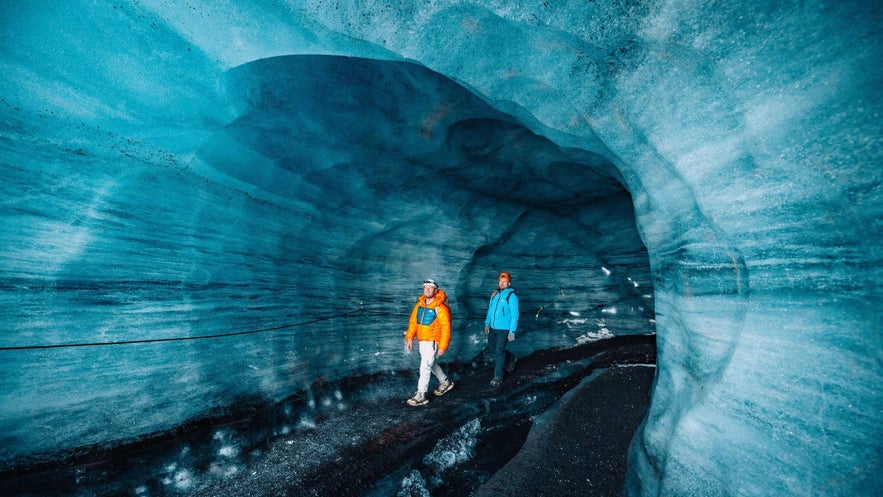
Some travelers think Iceland’s nature can only be admired at a distance, but it is one of the easiest countries in the world to explore up close. Guided Iceland nature tours and self-drive trips both give visitors direct access to the island’s most stunning places.
You can walk behind Seljalandsfoss Waterfall, visit the black sands of Reynisfjara Beach, or join Iceland wildlife tours to see puffins, seals, and whales. Adventurous visitors can also explore the Katla Ica Cave or hike across glaciers in Solheimajokull.
Even relaxed Iceland nature activities let you connect with the landscape. Iceland sightseeing routes such as the Golden Circle and Diamond Circle reveal waterfalls, volcanoes, and vast open views. Experiencing these sights shows that Iceland is worth the trip for anyone who loves wild and unspoiled nature.
Myth 21: Icelandic Nature Often Stops Air Traffic
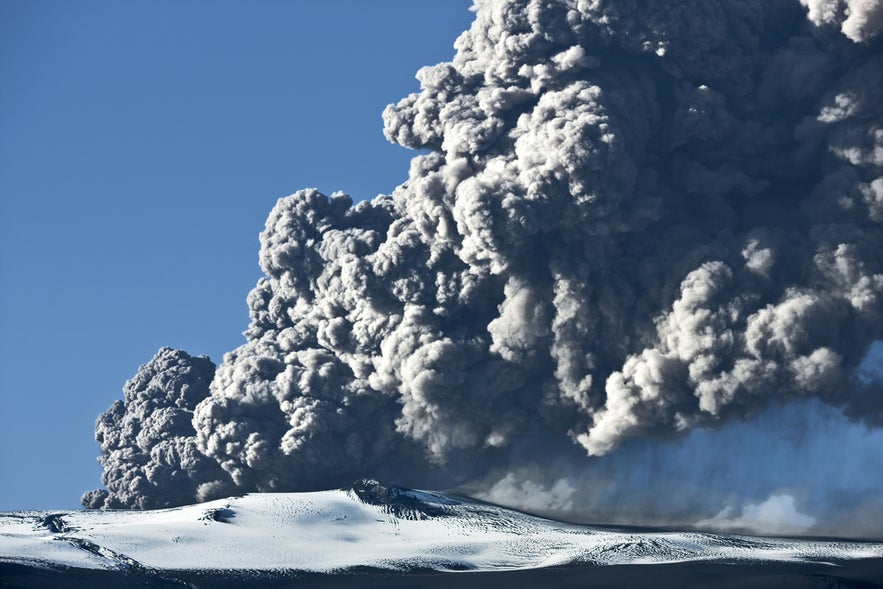
Many travelers remember the 2010 Eyjafjallajokull eruption that disrupted European air travel and made headlines worldwide. The event led to widespread concern about Iceland volcanic ash and its effect on flights, but modern safety systems have changed how such events are managed.
Today, Iceland’s airspace is closely monitored, and aviation authorities can adjust routes quickly to avoid ash clouds. These systems keep Iceland flights running smoothly and prevent large-scale cancellations. Within the country, airports remain open, and domestic flights continue as normal, showing that Iceland is safe to fly even during volcanic activity.
Eruptions also draw travelers who want to experience Iceland’s natural power in person. Once areas are declared safe, guided hikes, helicopter tours, and super jeep excursions take visitors close to new lava fields and craters.
Myth 22: Iceland Is Too Remote and Hard To Get Around
Iceland may seem isolated on the map, but it’s one of the most accessible destinations in the North Atlantic. Regular flights to Iceland connect major cities in Europe and North America, and the country’s international airport in Keflavik welcomes travelers year-round.
Once you arrive, getting around Iceland is simple. The Ring Road circles the island and links most major attractions. Driving in Iceland is straightforward for most visitors, and car rentals, guided tours, and public buses make exploring easy even for first-time travelers.
For those planning a road trip, it’s best to allow at least a week to enjoy the full loop. With its strong infrastructure and open landscapes, Iceland is a good vacation spot for anyone who loves freedom and adventure on the road.
Myth 23: Reykjavik Isn’t Worth Visiting in Winter
Many people assume Reykjavik's winter is too cold or quiet to enjoy, but the city stays full of life throughout the season. Warm lights fill the streets, cafes stay busy, and events celebrating light, music, and creativity bring warmth to the dark months.
There are plenty of things to do in Reykjavik in winter. The season begins with Christmas markets in December, followed by Dark Music Days in January, which fills venues with performances. In February, the Winter Lights Festival transforms the city with colorful installations, free museum nights, and outdoor shows that celebrate the return of daylight.
Reykjavik is worth visiting in winter for its lively atmosphere and easy access to nature. Many visitors take a day trip to the Golden Circle, go snowmobiling on Langjokull Glacier, or relax in the Blue Lagoon before returning to a city glowing with light, culture, and warmth.
Myth 24: Iceland and Greenland Are Basically the Same
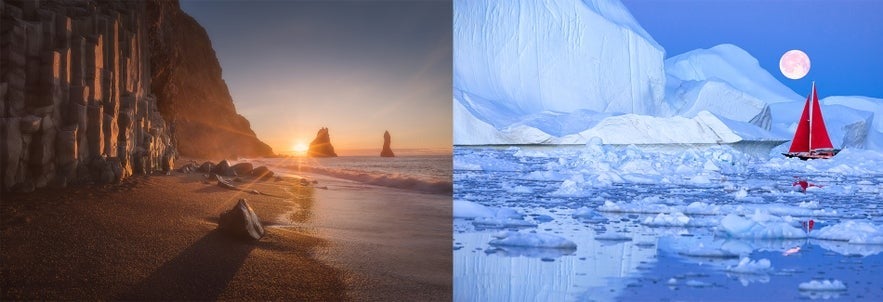
It’s easy to compare Iceland vs. Greenland, but the two countries are very different. Greenland lies deeper in the Arctic, covered mostly by a vast ice sheet and known for freezing temperatures. Iceland’s climate is milder, which keeps the coasts ice-free even in winter and supports green valleys and coastal communities.
Their natural attractions also vary. Greenland is defined by towering icebergs, deep fjords, and remote wilderness that can only be reached by boat or small plane. Iceland combines glaciers with volcanoes, waterfalls, geothermal pools, and colorful highlands, all connected by roads that make exploring easy.
Travel in both places can be costly, but Greenland’s remote location often makes it more expensive. Iceland’s modern infrastructure and variety of tours give visitors more flexibility and comfort. These differences show exactly why Iceland is worth visiting. It offers dramatic nature, rich culture, and easy access to experiences.
Myth 25: You Can’t Visit Iceland’s Volcanoes Safely
Many people imagine volcanoes as distant or dangerous, but in Iceland, they are an essential part of the travel experience. The country’s monitoring systems and clear safety rules make it possible to explore volcanic landscapes up close with confidence.
Iceland volcano tours offer several ways to experience these natural wonders. The Thrihnukagigur Volcano is the only place in the world where you can go inside a magma chamber. Nearby, the Fagradalsfjall Area has become one of the most popular hiking sites to see fresh lava formations created by recent eruptions.
Every active volcano in Iceland is closely watched. Activities like the volcano helicopter tour or an eruption site hike only run when conditions are safe. With careful planning and expert guidance, exploring these landscapes is one of the most memorable and secure experiences in Iceland.
Myth 26: It's Too Cold To Swim in Iceland
It may sound surprising, but swimming in Iceland is one of the most relaxing activities you can enjoy year-round. Natural hot water flows beneath the island, feeding geothermal spas in Iceland that stay warm even during winter.
The best-known is the Blue Lagoon, where milky blue water rich in minerals sits among black lava fields. In the north, the Forest Lagoon near Akureyri offers mountain views, while the Secret Lagoon in the south provides a peaceful, natural setting. Locals also visit swimming pools such as Laugardalslaug in Reykjavik for a daily soak.
These Iceland hot springs and pools are part of local life and a favorite way to unwind after sightseeing. Even when the air is cold, the water stays comfortably warm, proving that Iceland’s climate is perfect for swimming any time of year.
Myth 27: There Are No Trees in Iceland
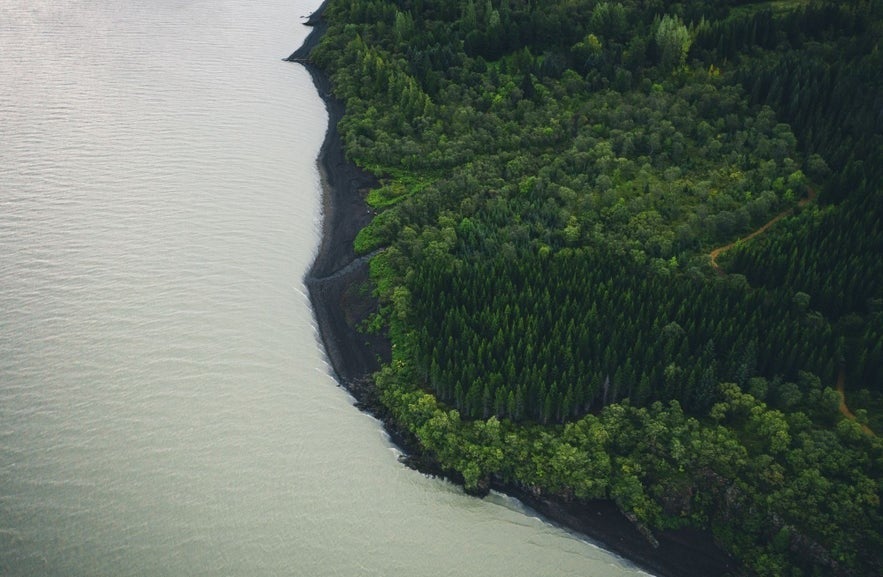 When people first arrive in Iceland, they often notice how few trees cover the landscape and assume Iceland has none at all. The island was once heavily forested with birch, but early settlers cleared large areas for farming and firewood. Today, the open scenery offers uninterrupted views of mountains, valleys, and waterfalls that stretch for miles.
When people first arrive in Iceland, they often notice how few trees cover the landscape and assume Iceland has none at all. The island was once heavily forested with birch, but early settlers cleared large areas for farming and firewood. Today, the open scenery offers uninterrupted views of mountains, valleys, and waterfalls that stretch for miles.
For travelers who want to see Iceland's forests, there are several beautiful spots to visit. Hallormsstadaskogur Forest in East Iceland is the largest in the country, and Vaglaskogur Forest in the north offers shaded trails and picnic areas surrounded by birch trees. These green spaces show a side of Iceland's nature that surprises many visitors.
Efforts toward reforestation in Iceland have also been expanding for decades. Native birch and other hardy trees are planted each year to bring back some of the island’s original woodland. The results are beginning to show across the countryside, where young forests are returning and adding more variety to Iceland’s dramatic scenery.
Myth 28: Iceland’s Highlands Are Just Empty Deserts
The Iceland Highlands may look empty on a map, but this vast interior is one of the country’s most striking regions. It sits above the coastlines and covers a landscape of lava fields, glaciers, rivers, and colorful mountains shaped by ancient eruptions.
The Icelandic landscape here includes steaming valleys at Kerlingarfjoll Mountain, the rainbow-colored ridges of Landmannalaugar, and the volcanic craters of Askja. Many parts of the region are reachable only by 4x4 on F-roads in the summer. Off-road driving is strictly forbidden, but hiking trails and guided tours make exploration easy and safe.
For anyone who enjoys open spaces, the Highlands prove that Iceland is good to visit beyond its coastal routes. Hot springs, black deserts, and endless views reveal a raw, colorful side of the island that feels far removed from the rest of the world.
Myth 29: There Are Few People and Fewer Animals in Iceland
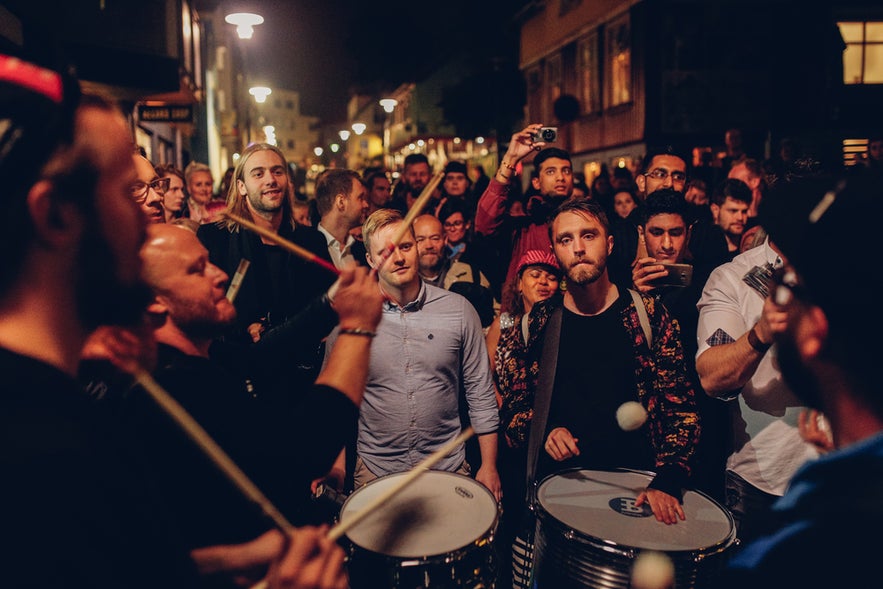 With an Iceland population of about 390,000, the country may seem quiet, but Icelanders are lively and close-knit. Most people live in coastal towns such as Reykjavik, Akureyri, and Isafjordur, where festivals, art, and local traditions bring people together. This strong connection between people and place is at the heart of Icelandic culture.
With an Iceland population of about 390,000, the country may seem quiet, but Icelanders are lively and close-knit. Most people live in coastal towns such as Reykjavik, Akureyri, and Isafjordur, where festivals, art, and local traditions bring people together. This strong connection between people and place is at the heart of Icelandic culture.
Iceland's wildlife is equally thriving. Millions of puffins nest at Dyrholaey and Latrabjarg Cliffs, whales and dolphins can often be seen just off the coast, and Arctic foxes roam the nature reserves of the Westfjords. Reindeer are also found in East Iceland, adding to the diversity of the island’s natural life.
Iceland may have a small population, but it never feels empty. The mix of active communities, diverse wildlife, and striking scenery creates a country that feels welcoming, balanced, and very much alive.
Myth 30: There's No Cute Wildlife in Iceland
 It’s easy to assume that Iceland’s harsh landscapes leave little room for adorable creatures, but the island is home to some of the most charming wildlife in the North Atlantic. Visitors often fall in love with the country’s small but hardy species that have adapted perfectly to its environment.
It’s easy to assume that Iceland’s harsh landscapes leave little room for adorable creatures, but the island is home to some of the most charming wildlife in the North Atlantic. Visitors often fall in love with the country’s small but hardy species that have adapted perfectly to its environment.
The Arctic fox in Hornstrandir Nature Reserve is one of Iceland’s most distinctive animals. It’s known for its thick coat that shifts from white in winter to brown in summer. The puffins in Iceland are just as beloved, recognized for their bright beaks, gentle nature, and lively presence during the summer nesting season.
The Icelandic horse is another highlight. Small, strong, and remarkably gentle, it roams freely across farms and fields throughout the island. Offshore, whales in Iceland often appear during whale-watching tours, surfacing close enough for travelers to admire their calm grace. Together, these animals show that Iceland’s wildlife has a quiet charm.
Myth 31: Iceland is Behind on Modern Architecture
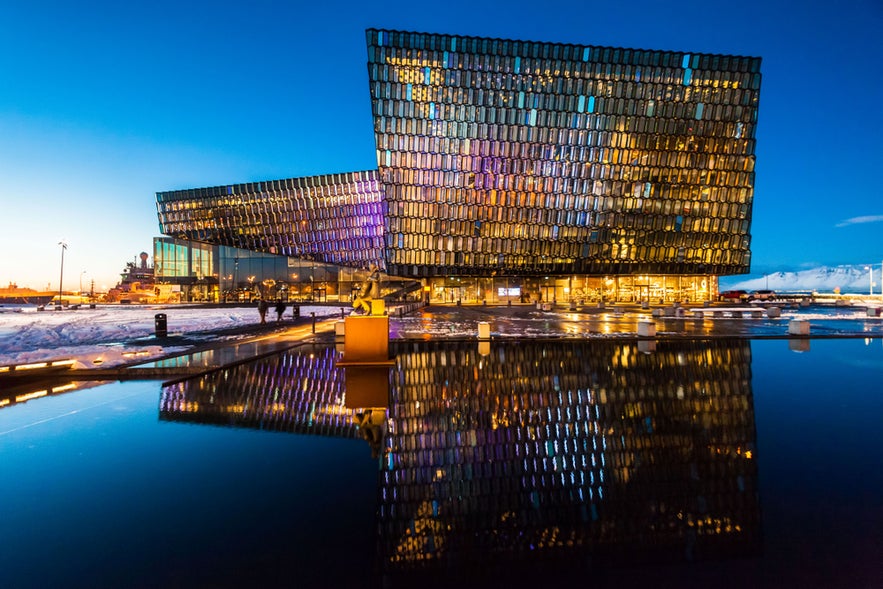
Some visitors expect Iceland to be all turf houses and traditional cottages, but modern Iceland has a thriving architectural scene. The country’s designers blend innovation with inspiration from nature, creating structures that feel both contemporary and deeply connected to their surroundings.
A leading example of Icelandic architecture is Harpa Concert Hall in Reykjavik, completed in 2011. Designed by artist Ólafur Elíasson and the Henning Larsen Architecture Firm, its glass facade reflects light like basalt crystals, drawing directly from Iceland’s volcanic landscape.
Other Reykjavik buildings show the same creative approach. Hallgrimskirkja Church resembles rising basalt columns, while the National Theatre and new waterfront developments highlight clean lines, natural light, and sustainable design. Together, they show how Reykjavik design combines modern style with Iceland’s natural identity.
Myth 32: There's No Art or Culture in Iceland

Iceland’s creative spirit is as much a part of the country as its landscapes. Art and storytelling have long shaped Icelandic culture, and this tradition continues through modern arts and literature.
The Reykjavik art scene is one of the most vibrant in the Nordics. Murals decorate the city’s streets, and galleries such as the Reykjavik Art Museum and National Gallery of Iceland display everything from classic paintings to experimental installations. Smaller studios and pop-up exhibitions give local artists an open stage to share their work.
Literature in Iceland remains central to national identity. The country has one of the highest publishing rates in the world, continuing a storytelling tradition that began with the Icelandic sagas. Contemporary writers like Arnaldur Indriðason, known for his crime novels, and Auður Ava Ólafsdóttir, celebrated for her introspective fiction, carry Icelandic culture forward.
Myth 33: Iceland's Music and Fashion Scenes Are Nonexistent
Because Iceland is small and remote, some assume its music and fashion scenes are limited. In truth, creativity thrives here, supported by a culture that values individuality and self-expression. The country’s size encourages collaboration, giving rise to a distinctive sound and style that stand out on the global stage.
Icelandic music has gained international recognition through artists like Björk, Of Monsters and Men, and Sigur Rós, who blend atmospheric sound with Iceland’s natural rhythm and emotion. In Reykjavik nightlife, live music fills cafes and bars almost every evening, offering an easy way to experience the city’s creative pulse.
Icelandic fashion brands, like 66°North, are equally innovative. Designers blend Nordic minimalism with materials suited to the local climate, producing pieces that are both stylish and practical.
Myth 34: Your Photos of Iceland Will Always Look Gray
 Many travelers think Iceland’s cloudy skies make photos look dull, but the country’s light and atmosphere create an incredible variety. For Iceland photography, changing weather often produces dramatic contrasts that make every scene more vivid.
Many travelers think Iceland’s cloudy skies make photos look dull, but the country’s light and atmosphere create an incredible variety. For Iceland photography, changing weather often produces dramatic contrasts that make every scene more vivid.
Soft light after rain highlights the green moss at Eldhraun Lava Field and the black sands of Reynisfjara Beach. Clear skies reveal detail around Kirkjufell Mountain and the icebergs of Jokulsarlon Glacier Lagoon. At sunrise and sunset, warm tones spread across Godafoss Waterfall and Vestrahorn Mountain.
Even cloudy days offer great shooting conditions. The diffused Iceland lighting enhances texture in basalt cliffs, glaciers, and waterfalls such as Skogafoss and Seljalandsfoss. These conditions make Iceland one of the most photogenic places in the world, proving that Iceland is beautiful in every kind of weather.
Myth 35: Icelanders Don't Know How To Party
At first glance, Iceland might seem calm and reserved, but when night falls, the energy changes. The center of Reykjavik nightlife is downtown, where cafes turn into bars and clubs on weekends and stay open until early morning.
The best bars in Reykjavik range from cozy pubs to energetic venues with DJs and local bands. Locals gather along Laugavegur Street for live music, dancing, and late-night drinks. Popular spots like Kiki Queer Bar, The English Pub, and Prikid Cafe capture the easygoing but vibrant character of the city.
Across the year, Iceland festivals and events keep the atmosphere festive. Most famously, Iceland Airwaves brings local and international artists to Reykjavik each November. On New Year’s Eve, fireworks light up the sky across the city as locals join in the celebration.
FAQs About Visiting Iceland
Planning a trip to Iceland often raises a few common questions. Here are answers to some of the most frequently asked questions about visiting Iceland.
What are the pros and cons of visiting Iceland?
The pros include dramatic scenery, safety, rich culture, and unique activities like glacier hikes and geothermal bathing. The main cons are the high costs, unpredictable weather, and short daylight hours in winter, yet the rewards far outweigh the challenges. Every visit reveals new beauty and a deeper appreciation for Iceland’s extraordinary landscapes.
Is Iceland worth visiting in winter?
Yes, Iceland is absolutely worth visiting in winter. The season offers ice caves, northern lights, and snowy landscapes. Roads stay open to major attractions, and guided tours make travel easy and safe.
Is Iceland expensive to visit?
Iceland can be costly, especially for dining and accommodation. Budget options include guesthouses, bakeries, and food halls in Reykjavik. Many natural attractions, such as waterfalls and beaches, are free to visit.
Is Iceland safe?
Absolutely! Iceland regularly ranks among the safest countries in the world, both for travelers and locals.
Is Iceland cold?
Yes, but not as cold as you probably think. In the winter, cities like New York and Berlin can get colder than Iceland’s capital city, Reykjavik. In the summer, daytime temperatures can range between 41 F and 77 F (5 C and 25 C), while winter averages stay around 5 F to -4 F (-15 C to -20 C) in the coldest areas.
Is Iceland good for families or solo travelers?
Yes. Iceland is one of the safest and most family-friendly countries in the world. Families can enjoy easy drives, child-friendly hot springs, and wildlife tours. Solo travelers benefit from the safety, convenience, and welcoming atmosphere.
What are the best Iceland travel tips?
Pack layers, waterproof gear, and sturdy shoes for any season. Book tours and accommodations in advance, especially in summer. Check weather and road conditions daily, and always follow local travel advisories.
So, Is Iceland Worth Visiting?
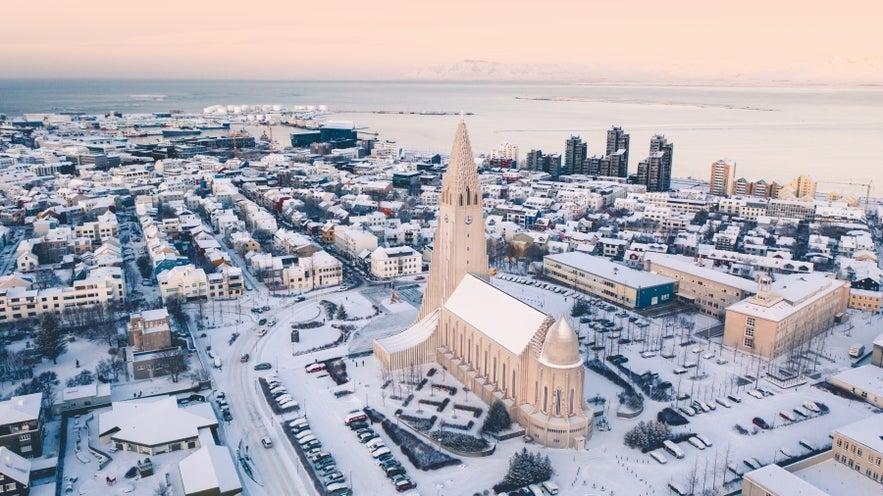 Yes, Iceland is absolutely worth visiting. The country remains one of the most rewarding destinations in the world once you look past the myths. The country is safe, welcoming, and full of unforgettable scenery, from waterfalls and volcanoes to creative cities and lively culture.
Yes, Iceland is absolutely worth visiting. The country remains one of the most rewarding destinations in the world once you look past the myths. The country is safe, welcoming, and full of unforgettable scenery, from waterfalls and volcanoes to creative cities and lively culture.
While travel costs can be high and the weather unpredictable, the experience is worth it. Iceland’s variety of landscapes, outdoor activities, and cultural highlights more than make up for the challenges. Take a look through some of Iceland’s top tour destinations and vacation packages to plan your dream trip today!
Did we cover all of the myths you’ve heard? What else is stopping you from visiting Iceland? Let us know in the comments below!

